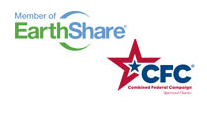Gabriel Benn and the Hip-Hop Educational Literacy Program (H.E.L.P.)

Educator Gabriel Benn, also known as the hip-hop artist Asheru, has been with the District of Columbia Public School District for over 13 years as both a teacher and administrator. He founded the Hip-Hop Educational Literacy Program (H.E.L.P.), which uses hip-hop songs to create culturally relevant lesson plans, covering topics from music history to environmental conservation, for inner-city youth.
Benn had been using hip-hop in his classroom since 1999 (complete with turntables in the classroom), but he did not create H.E.L.P. until six years later. Around the turn of the millennium, consensus about hip-hop’s use as an educational tool grew amongst educators of urban youth. Still, no one knew what exactly that would look like. In 2005, Benn’s creation of H.E.L.P was the first formalized hip-hop lesson plan.
Benn’s motivation for creating the program came from his own teaching experience. As the teacher of a special education course, he noticed that the traditional instruction methods were not holding his students’ interest. They were constantly acting out, and their lack of attention translated into reading levels well behind the national average.
Since hip-hop includes such concepts as metaphor, rhyme, hyperbole and allusion, the program originally used music as a way to teach literacy. Certain words were picked from songs as vocabulary and questions were asked about the poetic phrasing of the artists. From its initial success as a reading tool, Benn expanded the program into other subjects. He has used the song “Bridging the Gap” from rapper Nas to teach music history—the influence of jazz and blues on hip-hop— and “Everything is Everything” by Lauren Hill to teach about a “hopeful philosophy in life.”
To cover environmental issues, Benn has used the song “New World Water” by rapper Mos Def. This lesson introduces students to issues ranging from ecological— water conservation and the water cycle- to social – water-shortages in underdeveloped countries and the effects of Hurricane Katrina. Recently, he used Marvin Gaye’s “Mercy, Mercy Me” and “What’s Going On” to teach about the affects of the Gulf Oil Spill.
Benn’s use of a more culturally relevant lesson plan eventually helped to overcome the learning gap. Besides the quantifiable results of increased reading scores in the 10th grade English classes at a Southeast DC high school, teachers began to sense an overall change in attitude after implementing H.E.L.P. Benn notes that the culture quickly shifted to one of success where students felt comfortable with the material, were more participatory and were more respectful to their teachers. The program has since taken off, and in just five years H.E.L.P. has spread across the nation to places like Oakland, Atlanta, Ohio and Florida. His goal for the future is to initiate virtual classrooms.
Perhaps H.E.L.P.’s greatest success is that student achievement has gone far beyond normal literacy. The young people, coming from traditionally insular communities, have opened up to become world-oriented, global citizens, claims Benn. Using Kanye West’s “Diamonds from Sierra Leone”, for instance, they have learned and discussed the social implications of owning jewelry whose materials were mined under dangerous and corrupt conditions. It might not always change their desire to own conflict diamonds, Benn states, but at least they are conscious of where it came from.
It will take similar approaches to show all students how their actions affect the environment just as Benn has shown his students that conserving resources like water and petroleum affects the world around them. When they become conscious of the effects of their actions, youth want to conserve the environment for their own future. Through his dedication, Benn makes it clear that the student’s interest is always there, it just takes innovative solutions to tap into it.
Read about H.E.L.P. on www.edlyrics.com.


